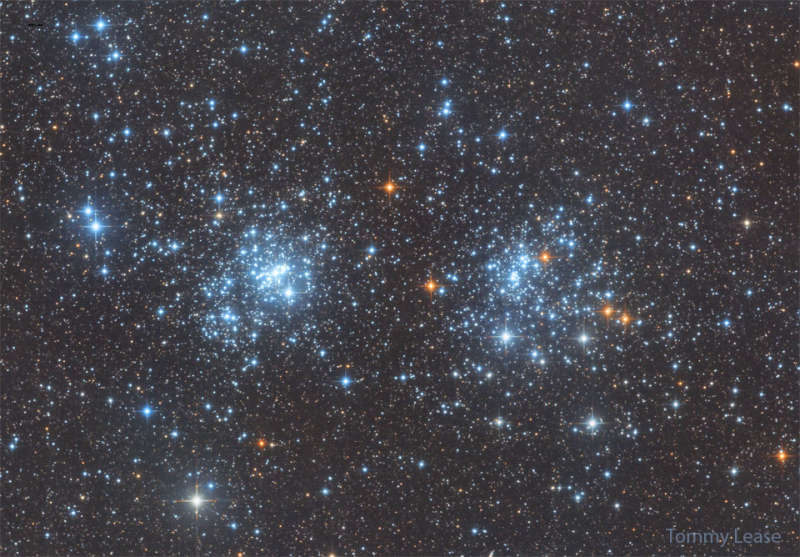Credit & Copyright: Tommy Lease
Explanation:
Few star clusters this close to each other.
Visible to the unaided eye from
dark sky areas,
it was cataloged in
130 BC by Greek astronomer
Hipparchus.
Some 7,000 light-years away,
this pair
of
open star clusters
is also an easy binocular target, a
striking
starfield in the
northern constellation of the mythical Greek hero
Perseus.
Now known as
h and chi Persei, or NGC 869 (above right) and
NGC 884,
the clusters themselves are separated by only a few hundred
light-years and contain stars much younger and hotter than the
Sun.
In addition to being physically close together,
the clusters' ages
based on their individual stars are similar - evidence that both
clusters were likely a product of the same
star-forming
region.
1999 2000 2001 2002 2003 2004 2005 2006 2007 2008 2009 2010 2011 2012 2013 2014 2015 2016 2017 2018 2019 2020 2021 2022 2023 2024 2025 |
Январь Февраль Март Апрель Май Июнь Июль Август Сентябрь Октябрь Ноябрь Декабрь |
NASA Web Site Statements, Warnings, and Disclaimers
NASA Official: Jay Norris. Specific rights apply.
A service of: LHEA at NASA / GSFC
& Michigan Tech. U.
|
Публикации с ключевыми словами:
open cluster - Рассеянное скопление
Публикации со словами: open cluster - Рассеянное скопление | |
См. также:
Все публикации на ту же тему >> | |
